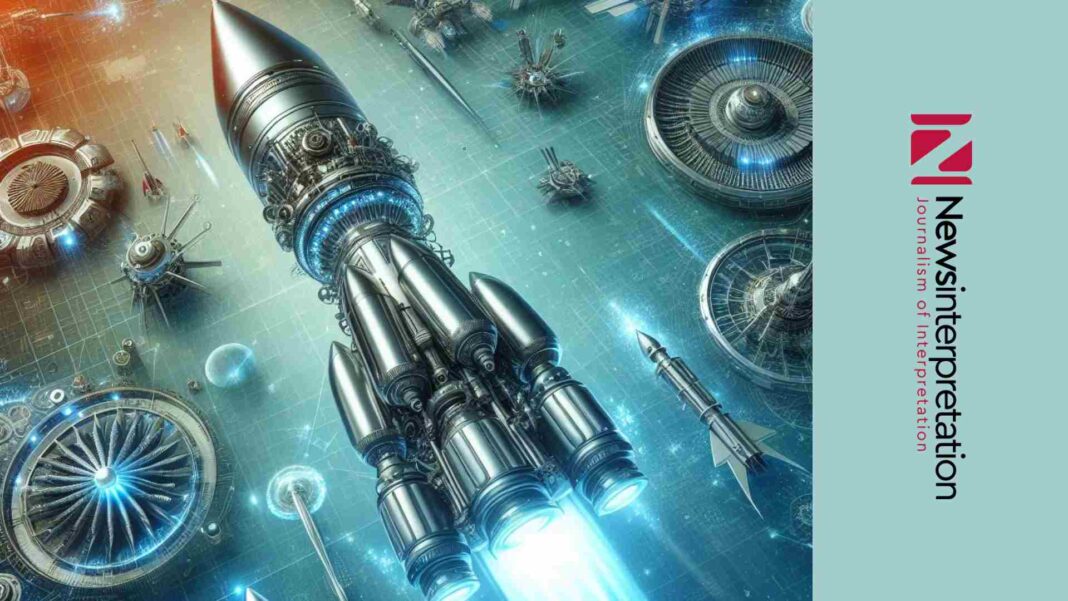As Spacetech progresses, let us learn more about the technology playing a crucial role in launching satellites and rockets. This technology is used in all space missions. It is known as the Propulsion technology.
What is Propulsion technology?
The basic meaning of this word is pushing something forward. It is achieved with the help of ‘thrust’.
Basically, it is all about pushing a vehicle forward by creating a force that acts in the opposite direction. Expelling gas or plasma from the vehicle generates this force. This concept involves Newton’s third law of motion, which tells us that every action (the force pushing outwards) has an equal and opposite reaction (the force pushing the vehicle forward. So, by pushing stuff out, we move forward!
Types of Propulsion
- Chemical Propulsion– It uses chemical reactions to generate thrust.
- Nuclear Propulsion– Firstly, the heat from the nuclear reactions generates thermal energy. Then, the thermal energy is converted into mechanical energy to generate thrust.
- Electric Propulsion– It uses electrically charged particles to generate thrust. Also known as ‘Ion propulsion’.
- Solar Propulsion– It uses solar rays to produce solar energy to generate thrust.
Developments in Rocket Propulsion Systems
Reusable launch vehicles- I find reusable rockets quite intriguing as they reduce the cost and time. Instead of being discarded like standard rockets, reusable rockets can be launched multiple times. Companies like SpaceX and Blue Origin have introduced this idea. This is surely a great development assuring us of more galactic missions.
Propellents- Researchers are working on new rocket fuels that boost performance and efficiency, allowing rockets to travel farther and faster using less fuel. This promises a more efficient and cost-effective space journey.
Ion propulsion- Ion thrusters use ionized gases to generate thrust, allowing precise and controlled space manoeuvres. They act like precision instruments, allowing spacecraft to navigate delicately around obstacles and accurately adjust orbits. This technology is a significant advancement in enhancing our ability to explore space efficiently.
Imagine a spacecraft equipped with a unique engine that does not depend on traditional fuels but instead uses xenon, a noble gas, to propel itself through space.
Ion Propulsion: The Future of Space Travel
This is an eco-friendly option which offers endurance and precision for extended missions beyond our solar system.
This technology consists of:-
- Ion Thruster- Did you know it releases electrically charged particles known as ‘ions’? These tiny particles generate energy for the huge rockets!
- Xenon propellant- This works as a fuel for the engine. Xenon is an electrically neutral substance. We chose it because it quickly provides ions and gives a boost to the thruster.
- The term “electron gun” is also known as a hollow cathode. This hollow cathode emits the required amount of electrons. We can say that it is a small electron generator.
- Barium Oxide (BaO) coats the engine.It helps the engine maintain a lower temperature. It is a white and non-inflammable compound.
Nuclear Propulsion: Exploring Interstellar Travel
Let’s dive into the intriguing world of nuclear propulsion, focusing on how it could enable us to explore distant stars and planets. As we transition into this exciting concept, we’ll explore how nuclear technology might propel us into the realm of interstellar travel.
Nuclear Propulsion: Paving the Way for Interstellar Exploration
Researchers are investigating nuclear propulsion for interstellar travel using Nuclear Thermal Propulsion (NTP) and Nuclear Electric Propulsion (NEP).
They include parts like-
- Reactors,
- Propellants,
- Tungsten
- Safety measures
These are very essential. Benefits include high thrust and steadiness for a vast range. Challenges involve technical sophistication and regulatory considerations. It represents a bold step towards expanding humanity’s reach in the universe.
Conclusion:
Spacetech advancements focus on propulsion technology, essential for satellite and rocket launches. It involves creating thrust to move forward, using different types like chemical, nuclear, electric, and solar. Reusable launch vehicles and improved propellants are driving efficiency and cost-effectiveness in space exploration.
Ion propulsion is a green technology for space travel, using xenon as fuel for ion thrusters that release charged ions. Barium Oxide coats the engine to maintain a lower temperature. Nuclear propulsion, with options like NTP and NEP, offers high thrust for interstellar exploration with safety measures and challenges.
The best way to predict the future is to create it.
~Abraham Linux





